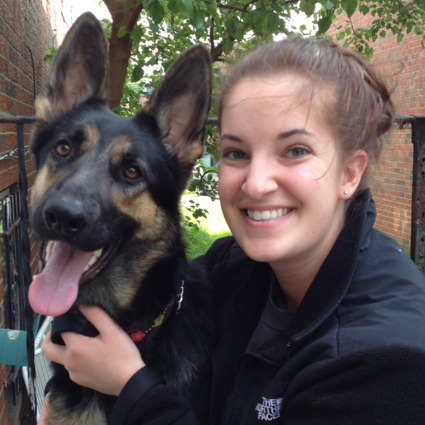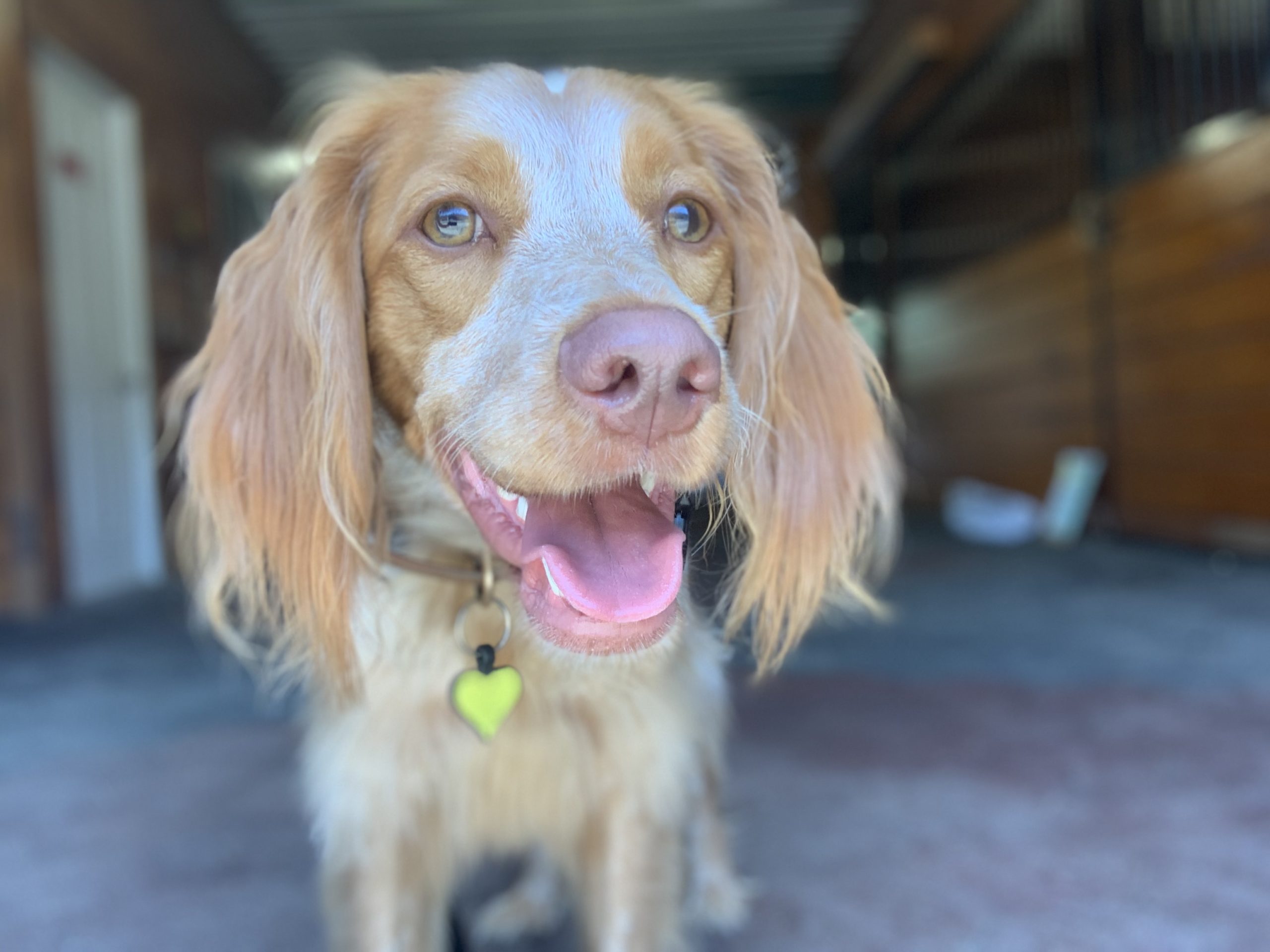With the weather finally breaking, the streets of Philadelphia are busier than ever. People are opting to walk instead of driving where they need to go. As a dog owner, you are probably more sensitive to this change, especially if you have a reactive dog.
This sort of congestion affects everyone, including aggressive dogs, anxious dogs, excited dogs, and even our puppies, who are just figuring the whole “walking” thing out. It’s important to learn how to navigate the crowds to get the best possible experience for your dog, even during busy summers in the city.
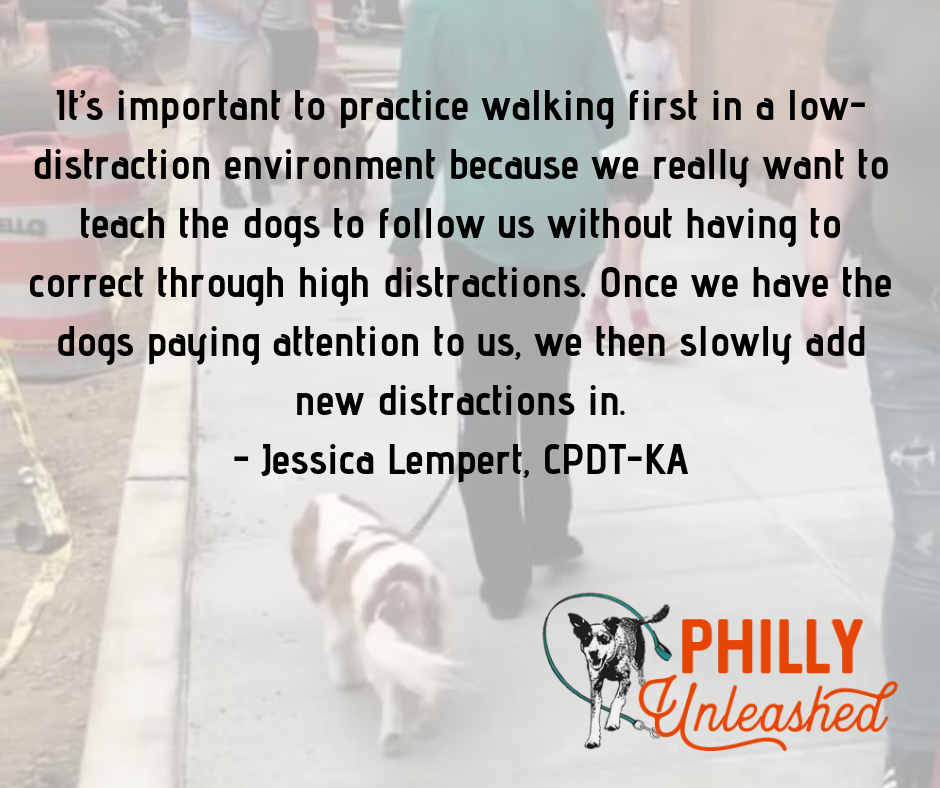
In class, we practice leash walking and greetings extensively. We understand the frustration of having a dog that pulls you in all directions during walks or a dog that just stops walking altogether. It’s important to practice walking first in a low-distraction environment because we really want to teach the dogs to follow us without having to correct through high distractions. Once we have the dogs paying attention to us, we then slowly add new distractions in.
Once your dog is focused on you, we can start to add “rules” to the walks, like sitting at corners before crossing the street or sitting for greetings.
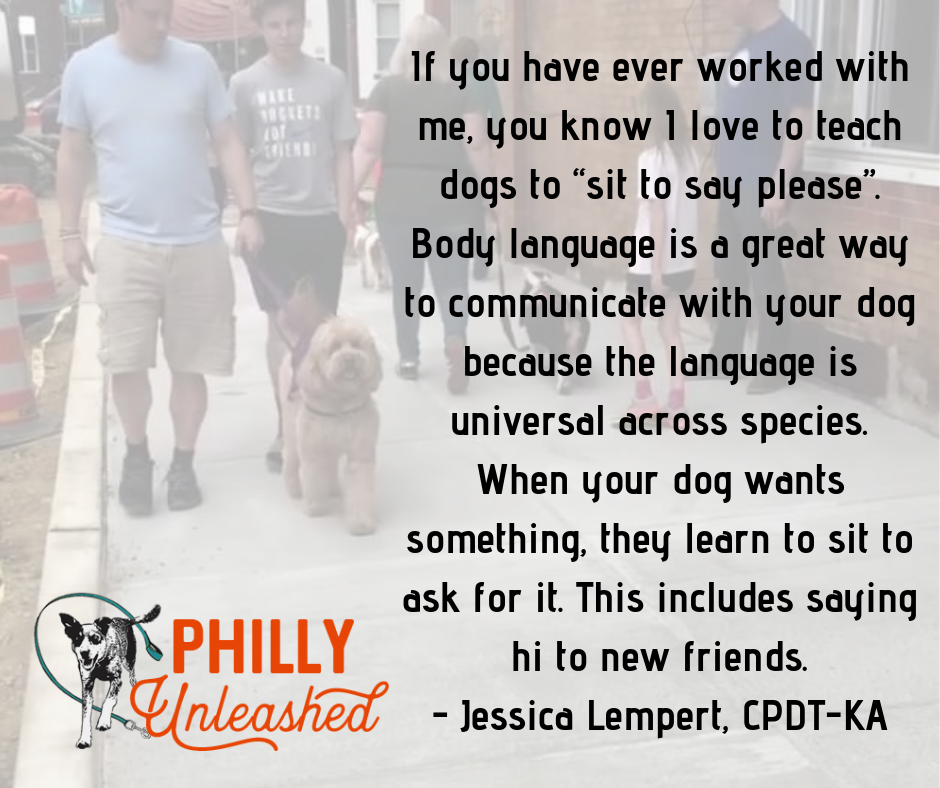
If you have ever worked with me, you know I love to teach dogs to “sit to say please”. Body language is a great way to communicate with your dog because the language is universal across species. When your dog wants something, they learn to sit to ask for it.
This includes saying hi to new friends. If your dog is excitable and wants to greet another person, prompting them into a sit first will ensure an appropriate greeting. We don’t want our dogs to be impulsive and just jump up on strangers. They have to “ask” nicely. Once they are sitting and appear relaxed, you can release them to say hello. As long as they keep their paws on the ground, greetings can commence. As soon as they start jumping, remove them from the greeting and try again. If you find that they are getting overstimulated, it’s time to end the greeting and refocus your dog.
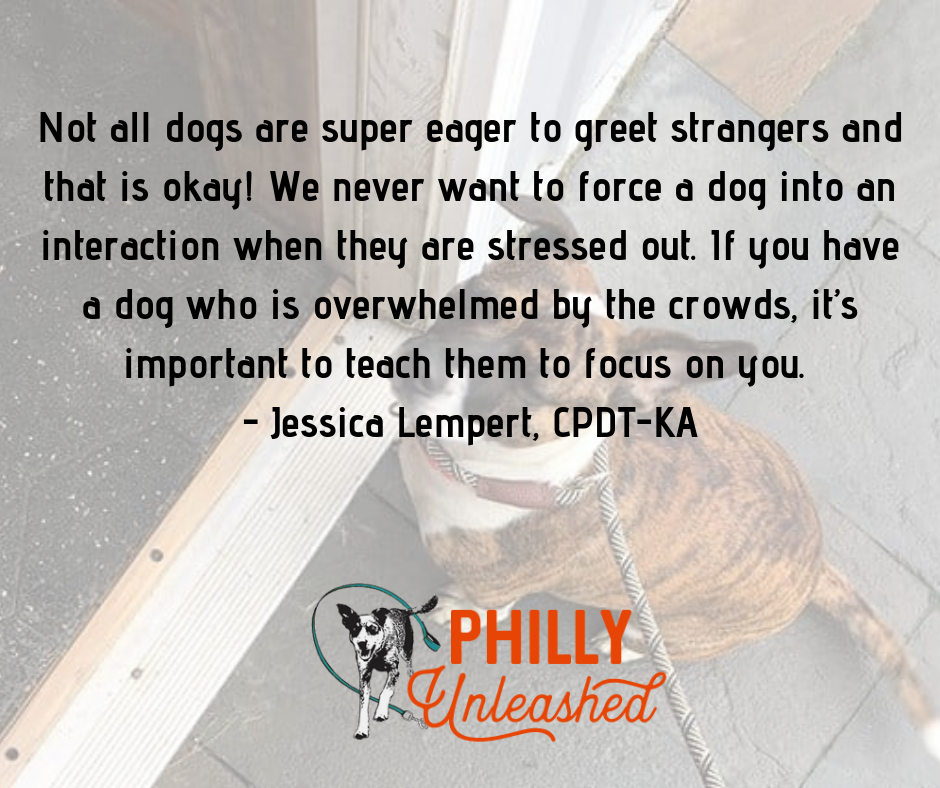
Not all dogs are super eager to greet strangers and that is okay! We never want to force a dog into an interaction when they are stressed out. If you have a dog who is overwhelmed by the crowds, it’s important to teach them to focus on you. Using your “look” and “touch” cues will distract your dog from the traffic around them. Pairing these cues with high-value treats will also keep their focus during these stressful scenarios. With time and practice, your dog will naturally focus on you and the treat value will lessen as the tension in your dog does. Once we reduce the stress, we can potentially add some mild, short greetings if they begin to show interest. I like to teach dogs to “target” other people’s hands so they can initiate the interaction.
Every dog is different, and on busy walks it becomes obvious. It is important to be mindful of your dog’s threshold when placed in a stressful situation, like walking around Washington Square at 6 pm on a Friday night. Practice doesn’t make perfect but it certainly makes PROGRESS (trust it). Learn if greeting strangers is a reward or a punishment for your dog and use those greetings as a guide for navigating your walks. Walking is a great bonding experience for you and your dog so we want to make sure it is as rewarding as possible, even in the trickiest of scenarios.

